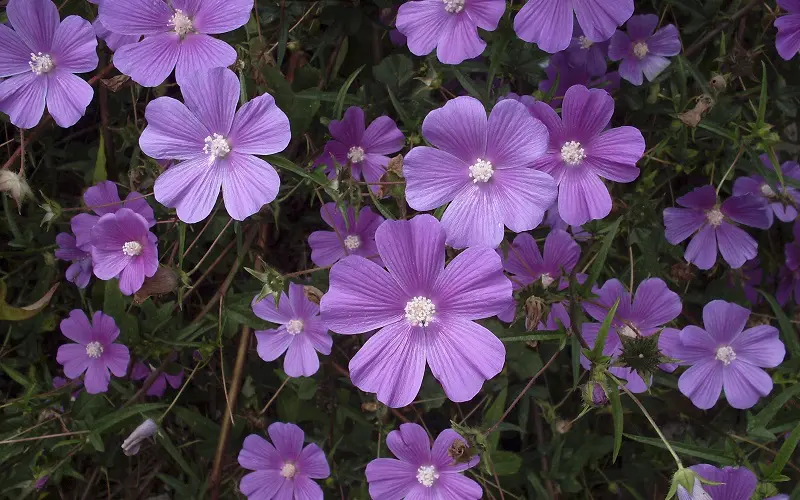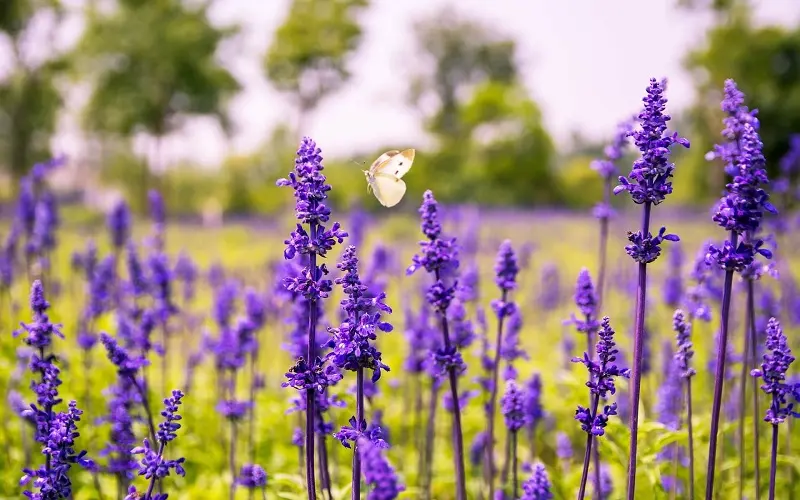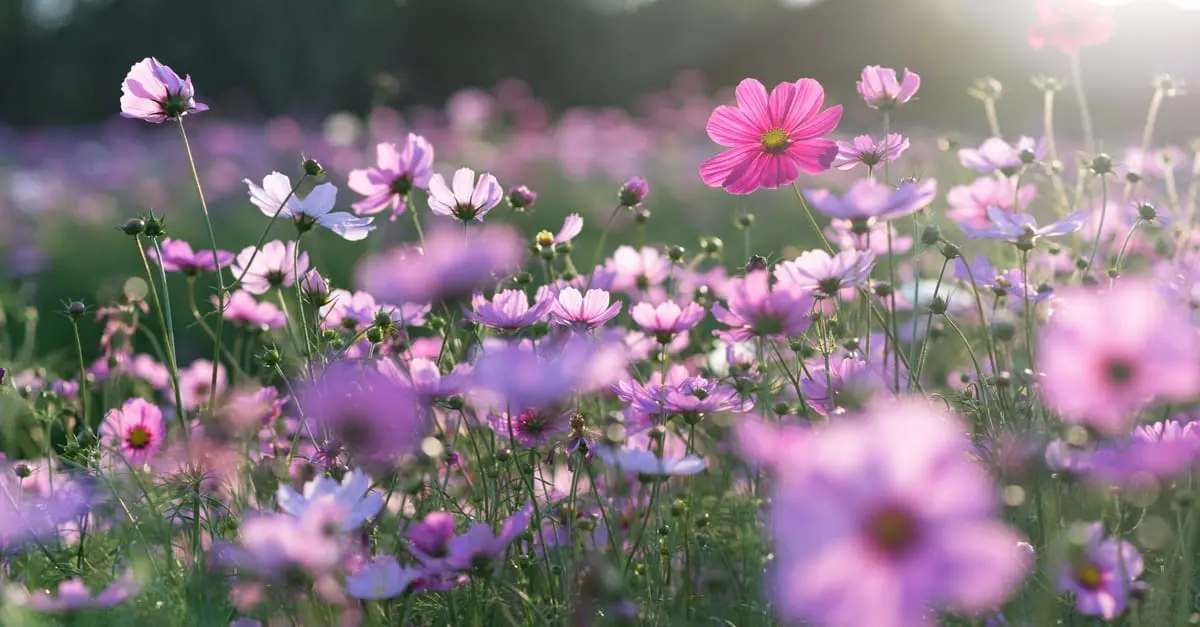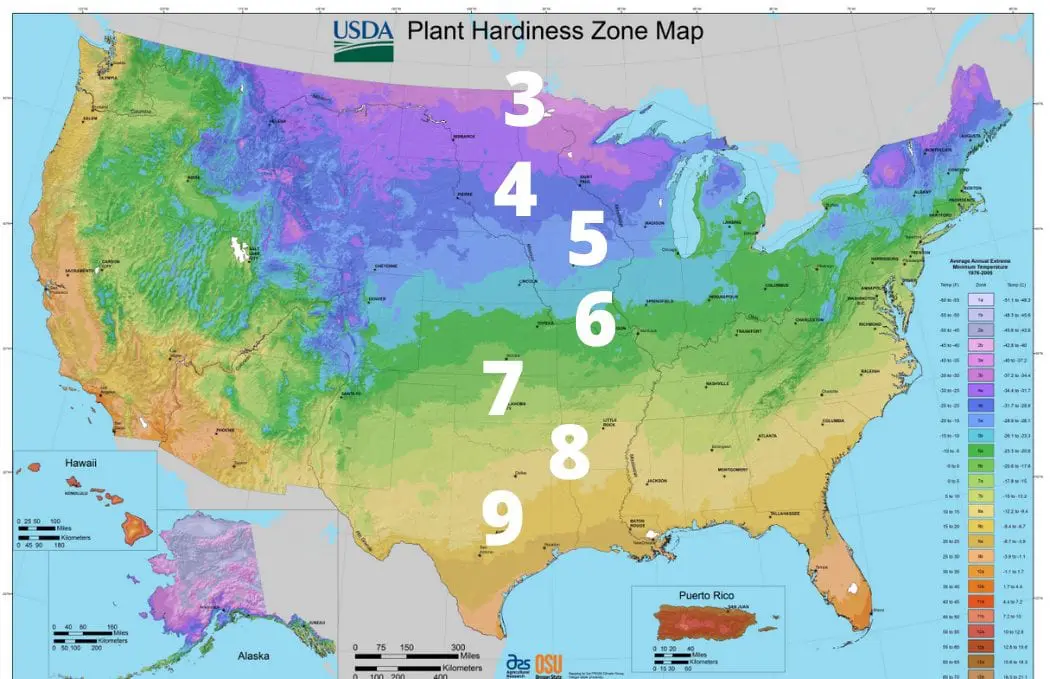Purple flowers are some of the most eye-catching blooms. In a sea of green grass, plants, and bushes, a pop of purple color evokes a feeling of serenity and magic.
But what variety should you pick? We’ll answer that question in this article.
Which Purple Flower Should You Plant?
Landscaping with purple flowers will vary based on the hardiness zone you live in within the United States.
Some tropical varieties are not well-suited for colder regions, and those that require rainy conditions won’t thrive in the more arid parts of the country. For this reason, we’ve included the preferred climate zone for each flower.
In our list, you’ll find a variety of both perennial and annual deep purple to light purple flowers with blooms that range from tiny and delicate to big and bold.
Some have fragrant flowers that make them even more enjoyable to plant near your home. We’ve listed which plants are annual, perennial, or both.
Annual and Perennial Flowers

Before deciding what type of purple flowers to buy, you’ll need to know the difference between annual and perennial flowers. But don’t worry—we’ve highlighted each type for you.
Annuals
These plants produce purple flowers during a single growing season. They will put on a show of pretty purple blooms and die at the end of the growing season.
Many of the purple flowers listed below are also available in a variety of other colors. This is important to know so you aren’t surprised when these flowers only stick around for one season.
Perennials
These plants and bushes with purple flowers will come back year after year. If you live in an area that experiences cold winters, the vegetation of the plant may die and reappear in the spring or early summer.
In more temperate climates, perennials may not die back but may experience a short period of limited growth instead.
Note: Some types of flowering plants can be toxic to animals, adults, and/or children when ingested or touched. When this information is available, we have noted it with an asterisk, but please take care to research the possible toxicity of any plant you’re considering planting around your home.
Types of Purple Flowers
When selecting your purple flowers to plant, you have many, many options. We’ve highlighted the various types available to you, broken down by hardiness zone.
Zones 3-10
- Allium. Bursts of pom-pom-like blooms on top of slender stalks. Some shorter varieties make excellent ground cover. Poisonous to dogs and cats. Perennial. Zones 3-9
- Aster. Somewhat shaggy, daisy-like petals that grow in low mounds. Perennial. Zones 3-8
- Bellflower. Cup-shaped flowers similar to crocus. Perennial. Zones 3-9
- Carnation. Large, ruffly blooms similar to roses. Great for cut flowers and centerpieces. Perennial and annual types. Zones 3-9
- Catmint. Aroma is attractive to cats. Tall spikes of purple flowers. Perennial. Zones 3-8
- Clematis. Climbing vine (up to 30′) with showy flowers. Perennial. Zones 3-9
- Coneflower. Also called echinacea. Similar to daisy or aster, but on tall stalks from mounding growth along the ground. Perennial. Zones 3-8
- Crocus. The flowering plant that the spice saffron is sourced from. Large, ground-hugging blossoms. Perennial. Zones 3-8
- Chinese bellflower. Also called balloon flower. Interesting, balloon-shaped flowers that “pop” open when mature. Perennial. Zones 3-9
- Dianthus. Also called “pinks.” Small, ruffled blooms in a mounding habit. Perennial and annual types. Zones 3-9
- Liatris. Flowers cover the stalk and resemble sea urchins or anemones. Perennial. Zones 3-10
- Lilac. Short bloomers (2 weeks per year) with aromatic blossoms. Perennial. Zones 3-7
- Morning glory. Climbing vine that is notorious for self-seeding. Grows quickly. Annual. Zones 3-10
- Zinnia. Large, daisy-like petals on plants that grow quickly and last all season. Annual. Zones 3-10
Zones 4-9
- Foxglove. Tall, vertical spikes of blooms similar to snapdragons. *Very poisonous. Biennial or perennial. Zones 4-8.
- Geranium. Water-loving flowers with a distinct 5-petal shape. Perennial and annual types. Zones 4-8
- Hydrangea. Bushes that produce medium-sized clusters of flowers. Perennial. Zones 4-9
- Dwarf iris and iris. Available in multiple varieties. Elegant, regal petals on thin stalks. Perennial. Zones 4-9
- Monkshood. Flowers look like a hooded covering. *Very poisonous. Perennial. Zones 4-8
- Pansy. Small flowers that resemble faces. Doesn’t tolerate extreme heat or drought well. Annual. Zones 4-8
- Salvia. Spikes of vertical blooms atop stalks are similar to lupine. Perennial in zones 4–9; otherwise, annual
Zones 5-10
- Butterfly bush. Large, bushy shrubs with flower spikes made of lots of tiny flowers. Perennial. Zones 5-10
- Gladiolus. Tall, spiked flowers that resemble the iris. *Poisonous to dogs and cats. Perennial. Zones 6-10
- Lavender. Mounding bush with delicate, aromatic lavender flowers. Perennial. Zones 5-10
- Wisteria. A fast-growing, climbing plant with small spikes of hanging flowers. Caution: Prune often. Do not plant near structures, as it can damage them. Perennial. Zones 5-8
Zones 9-11
- Petunia. This is a very common, delicate flower that needs full sun and lots of water. Annual. Zones 9-11
- Verbena. Stemmed plant with blooms ranging from very small to large. *Can be poisonous to animals. Perennial in zones 9-11, otherwise, annual
Which Purple Flower Should You Pick?

Ranging from warm, pinkish hues like mauve, magenta, and fuchsia to deeper, almost-blue violets and dark mulberry shades, purple has a wide range of shades.
It can be mixed to create a dazzling display of color on the ground, in containers, or in hanging baskets along porches and decks. Purple wildflowers can turn a bare meadow into a picturesque scene.
In environments ranging from cold to warm, with sun exposure from full or partial shade to full sun, these flowering plants can survive and thrive almost anywhere and attract nearby hummingbirds, butterflies, and bees.
Just make sure you select the plants that are native to your area or climate zone. The regal, purple hues these plants will bring to your yard are a stunning visual that can make your property stand out.
Whether you decide to plant all-purple flowers or mix these blooms into a sea of colors (we especially like purple with white flowers), they’re sure to bring a naturally beautiful component to your front of house landscape.


